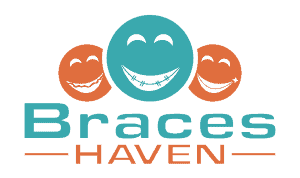As an Ottawa orthodontist, Dr. Charles Cohen treats patients of all ages. But there’s sometimes a bit of an advantage for our patients who access care at a younger age.
When a Child Should Get Their First Orthodontic Screening
The Canadian Association of Orthodontists suggests that each child sees an orthodontic specialist by age 7 for an initial evaluation. That way, if there are jaw growth concerns, interceptive measures (such as Phase I Treatment) can be initiated as your child’s skeletal structures are still developing.
In some situations, an evaluation may be necessary as young as age 2 or 3. Even though the best age for braces isn’t toddlerhood, there are orthopaedic measures that promote proper jaw formation. Creating extra space allows for straight tooth alignment, especially if habits such as extended thumb/finger sucking, tongue thrusting, sippy cup use, or speech impediments are concerns.
How Old Do You Have to Be to Get Braces?
If you were to ask at what age are braces recommended, you would get answers from as young as seven years old up through 13-14, when teens have finally lost all of their primary (baby) teeth.
The best age for braces differs from one individual to the next. For some, it may be that we need to fine-tune their tooth alignment once all of their permanent teeth have erupted. So, for those patients, they may fall somewhere between 12-15 years old.
In other scenarios, we want to address the primary teeth before the permanent teeth ever erupt. For instance, there may be visible crowding in your child’s primary teeth, indicating that they have a narrow jaw without enough room for larger permanent teeth to fit into their bite. Since their oral anatomy is still growing and developing, we can intercept their growth patterns to expand their palate and jawbone, naturally creating the proper amount of space for permanent teeth to erupt in a desirable position.
That said, you’re never too old to get braces. Even though adult orthodontics work differently than children’s braces, there are still benefits to straightening your teeth later on in life.
Phase I Treatment vs. Phase II Treatment
Children’s braces are typically categorized as either Phase I Treatment or Phase II Treatment.
Phase I Treatment is when we use orthodontic appliances (such as palatal expanders or orthopedic appliances) and braces to encourage the mouth to grow into a specific shape. Typically, you see a Phase I Treatment occur as early as age seven or late as age 10. This step nudges primary teeth into a location that guides the permanent teeth underneath into the best alignment. Once there’s an established healthy growth pattern, we remove the orthodontic appliances and wait for the remaining permanent teeth to erupt.
It’s important to note that Phase I Treatment is sometimes referred to as “early interceptive orthodontics” or “orthodontic orthopaedics.” You can use the terms interchangeably, but they all refer to the same step in orthodontic care.
After all baby teeth (also called primary teeth) have fallen out and the permanent teeth erupt, Phase II Treatment is initiated. Phase II is more of the fine-tuning that occurs after all of the permanent teeth have come in. It usually happens during the early to mid-teen years of the patient.
Essentially, getting Phase I reduces the length of time you’ll need in Phase II later on. It also usually eliminates the added risk of possible surgical requirements associated with anatomical irregularities.
Can Phase II be effective on its own, without Phase I Treatment? It depends. For moderate to major anatomical growth issues, no. But for minor tooth misalignment, conventional braces without Phase I therapy may be no issue whatsoever. Assuming no major anatomical concerns are at play, a traditional comprehensive approach replaces the first half of a two-part process.
Circumstances for Earlier Intervention
How can you tell whether your child’s oral development requires early intervention or Phase I Treatment?
Look for things like:
- Their tongue pressing against their front teeth when they swallow.
- A gap between their top and bottom front teeth when biting together (open bite).
- Ongoing thumb-sucking, finger-sucking, or pacifier use past 1-2 years of age.
- Delayed speech development or signs of a possible speech impediment.
- Dietary or digestive issues due to poor absorption of food (caused by an inefficient chewing pattern).
- Baby teeth that are crowded or touching side-by-side with their neighbours.
- A family history of crowded, crooked teeth.
- Premature tooth loss due to injuries or decay.
- An anatomically narrow, small or short jaw.
- Diagnostic X-rays showing visible irregularities or impacted teeth.
The key to identifying whether early intervention is required is to bring your child in for routine dental checkups. Your paediatric or family dentist can continually monitor their biting patterns and refer you to our Ottawa orthodontist should there be potential concerns.
Plan to reserve an orthodontic evaluation with an orthodontic specialist before your child is seven years old. At this point in oral development, it allows unique insight into their future oral anatomy. Why? Because there is typically a combination of both primary and permanent teeth, indicating what the next phases of their eruption patterns will be.
What’s the Average Age for Braces?
The average age for braces varies from one person to the next. For some children, it might be 7 or 8 years old. For others, it could be 12 or 15. And let’s not forget our adult orthodontic patients, who sometimes get braces in their 30s, 50s, or beyond.
If you have questions related to if and when your children should get braces, we encourage you to meet for a one-on-one consultation with Dr Cohen. Use the form below and contact us today to reserve your complimentary exam.



